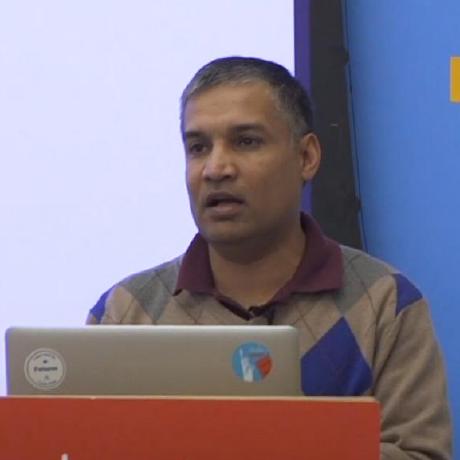What's new in Exograph 0.4
We are excited to announce the release of Exograph 0.4! This release introduces several new features and enhancements, many in response to our users' feedback (thank you!). While we will explore some of these features in future blogs, here is a quick summary of what's new since the 0.3 version.
NPM modules support
Exograph offers a Deno integration to write custom business logic in TypeScript or JavaScript. Until now, you could only use Deno modules. While Deno modules ecosystem continues to expand, it is not as rich as the Node ecosystem. Recognizing this, Deno added support for NPM modules to tap into the vast range of NPM packages, and Exograph 0.4 extends this support through our integration. You can now harness NPM modules to checkout with Stripe, send messages with Slack, interact with AWS, and so on.
As an illustration, here is how you would send emails using Resend. First, you would define a mutation:
@deno("email.ts")
module Email {
@access(true)
mutation sendAnnouncement(): Boolean
}
And implement it using the resend NPM module:
import { Resend } from "npm:resend";
const resend = new Resend("re_...");
export async function sendAnnouncement(): Promise<boolean> {
await resend.emails.send({
from: "...",
to: "...",
subject: "Exograph 0.4 is out!",
html: "<p>Exograph <strong>0.4</strong> is out with support for npm modules, playground mode, and more!</p>",
});
return true;
}
Compared to the example shown on the Resend site, the difference is the npm: prefix in the import statement. This prefix tells Exograph to look for the module in the npm registry.
Railway integration
Exograph's deployment has always been easy since the server is just a simple binary with everything needed to run. However, we strive to make it easier for specific platforms. Exograph 0.4 now supports Railway as a deployment target! Here is a quick video where we create an Exograph project from scratch and deploy it to Railway in under three minutes.
To support this kind of integration, where the cloud platform can also run the build step, we now publish two Docker images: cli with the exo binary and server with the exo-server binary.
exo playground
A recommended practice for GraphQL deployments is to turn off introspection in production, which is the default in Exograph. However, exploring the GraphQL API with such a server becomes difficult without code completion and other goodies. Exograph 0.4 introduces a new exo playground command that uses the schema from the local server and executes GraphQL operations against the specified remote endpoint.
exo playground --endpoint https://<server-url>/graphql
Starting playground server connected to the endpoint at: https://<server-url>/graphql
- Playground hosted at:
http://localhost:9876/playground
You will see a UI element in the playground showing the specified endpoint. Besides this difference, the playground will behave identically to the local playground, including autocomplete, schema documentation, query history, and integrated authentication.
This doesn't bypass the recommended practice of turning off introspection in production. The exo playground is useful only if you have access to the server's source code, in which case, you would know the schema, anyway!
See the video with the Railway integration above for a quick demo of the exo playground command.
Access control improvements
Exograph offers to express access control rules precisely. In version 0.4, we enhanced this expressive power through higher-order functions. Consider a document management system where users can read documents if they have read permissions and mutate if they have written permissions. The following access control rules express this requirement.
context AuthContext {
@jwt("sub") id: Int
}
@postgres
module DocsDatabase {
@access(
query = self.permissions.some(permission => permission.user.id == AuthContext.id && permission.read),
mutation = self.permissions.some(permission => permission.user.id == AuthContext.id && permission.write)
)
type Document {
@pk id: Int = autoIncrement()
...
permissions: Set<Permission>
}
@access(...)
type Permission {
@pk id: Int = autoIncrement()
document: Document
user: User
read: Boolean
write: Boolean
}
@access(...)
type User {
@pk id: Int = autoIncrement()
...
permissions: Set<Permission>
}
}
With this setup, no user can read or write a document without the appropriate permission. The some function allows you to express this requirement in a single line. Internally, it lowers it down to an SQL predicate for efficient execution.
Currently, we support the some higher-order function, which matches the Array.prototype.some function in Javascript. This function takes a predicate function and returns true if the predicate function returns true for any element in the array.
Other improvements
Besides these major features, we continue to improve Exograph to fit more use cases and simplify the developer experience.
For the Postgres plugin, for example, you can now specify that the tables could be in a non-public schema and specify deeply nested creating and updates in a single mutation. It also allows clients to supply the primary key value for UUID fields when creating an entity.
In version 0.3, we introduced a friction-free integration with Clerk for authentication. Since then, we have extended this support to Auth0 as an authentication provider! While Exograph generically supports all compliant OIDC providers, the playground integration for Clerk and Auth0 makes it easy to try out APIs that require authentication. Along the way, we updated key rotation for the OIDC authentication mechanism.
Let us know what you think of these new features and what you would like to see in the future. You can reach us on Twitter or Discord.




